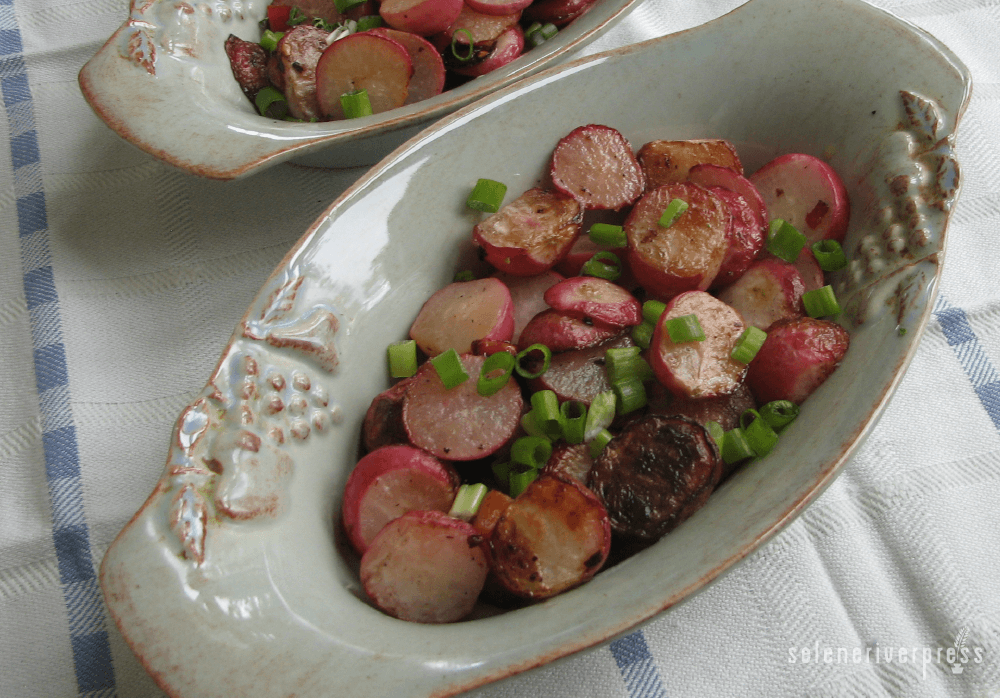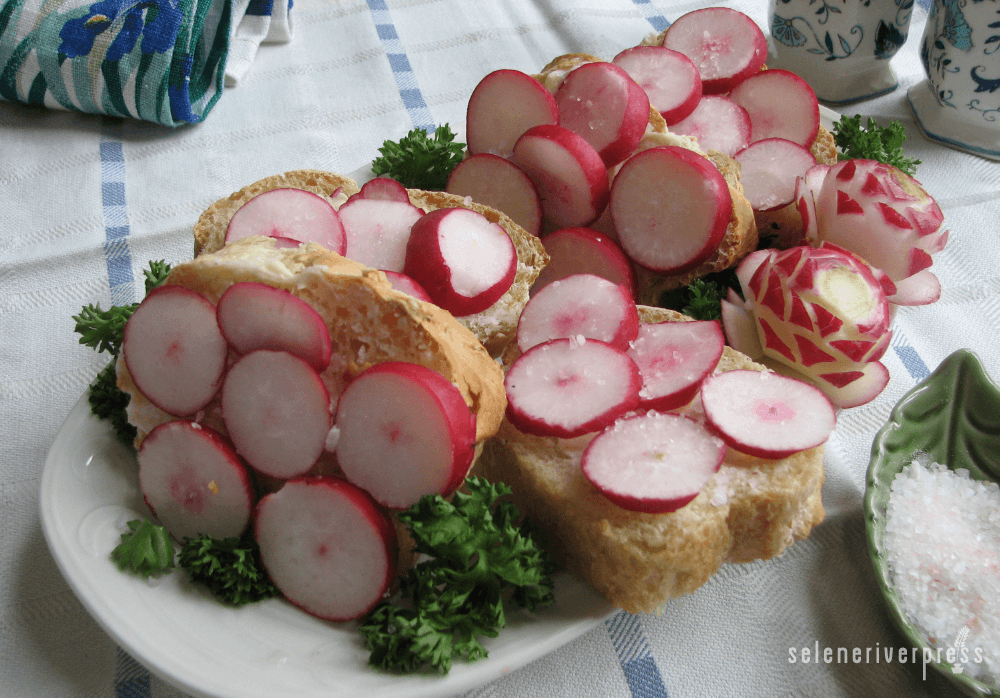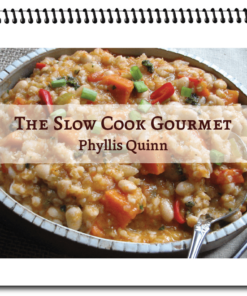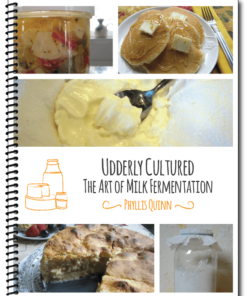Ask Chef Phyllis:
The first vegetable my husband brings in from his spring garden is a bunch of radishes. We enjoy them for about two weeks. We often forget this from year to year, but after a little while no one wants to eat them. They are too strong or spicy, the leaves are too hairy in a salad, and I think they most likely don’t have a lot of vitamins. Any suggestions to make the family eat them? Can they be cooked?
—Josephine Delliger from Roanoke, VA
Nothing says spring to me more than those little red globes working their way up above the ground in the early April garden. These harbingers of spring are a great introduction to gardening for children—radishes take only about 3½ weeks to a month from seed to fruition, which is fast enough to appease the most impatient of us.
In almost any kind of soil, with barely any care, this nutrient packed vegetable brings loads of vitamins and minerals to the table. A member of the brassica family like cabbage and cauliflower, the humble radish is resistant to disease and pests, and you can eat them raw or cooked. Many varieties of radish are grown around the world, but the one we know and recognize most in our supermarkets is the Cherry Belle—a bright, round, red-skinned radish with a white interior. The Snow Belle is the all white variety of the same radish. And coming soon to our markets: the colorful Watermelon radish, featuring a red interior with a green skin. I can’t wait.
My first experience with radishes was from my Poppa’s garden. If you’re of French or Italian descent, you’ve most likely had this early garden treat for lunch. First you slather thick slices of French bread with softened sweet (unsalted) butter. Next, lay thinly sliced radishes across the top of the butter and dust them with flaked sea salt. The peppery taste of the radish is completely neutralized by the butter. It’s so simple—most people are surprised at how much they like it. One afternoon friends brought radishes to my kitchen, saying they didn’t like them. I made a small platter of radish bruschetta from their gift and—you guessed it—they never brought me radishes again.
The following dish is another equally good recipe to try, and it only takes about 5 minutes.
I love spring.

Braised Radishes with Honey
Braising is key here as it tames the natural pepperiness of radishes. You may serve this warm or at room temperature. It’s a great accompaniment to chicken, beef, or fish.
Ingredients
2 tablespoons honey
1 tablespoon lemon juice
1 tablespoon sherry vinegar or apple cider vinegar
1 tablespoon olive oil
2 large bunches radishes (20–25), roots trimmed and radishes halved
1 teaspoon salt
½ teaspoon freshly grated coarse tricolored peppercorns (pink, white, green), or black pepper
1 tablespoon chopped fresh chives, for garnish
Instructions
- Whisk honey, lemon juice, and vinegar in a small bowl.
- Heat olive oil in a skillet over medium heat. Add radishes cut side down and sauté for 2 minutes.
- Add honey mixture, stirring to coat. Reduce heat to low, cover the pan, and cook about 3–4 minutes.
- Add salt and peppercorns or black pepper.
- Transfer to a serving dish and garnish with chopped chives.

AUTHOR’S NOTE
To choose your organically grown and fresh ingredients wisely, use the following criteria:
- chemical- and hormone-free meat
- wild-caught fish
- pasture-raised, organic eggs
- whole, unrefined grains
- virgin, unrefined, first-press organic oils
- whole-food, unrefined sweeteners
- pure, clean, spring water
- sea salt
- raw and/or cultured milk and cream products
Photos by Phyllis Quinn




